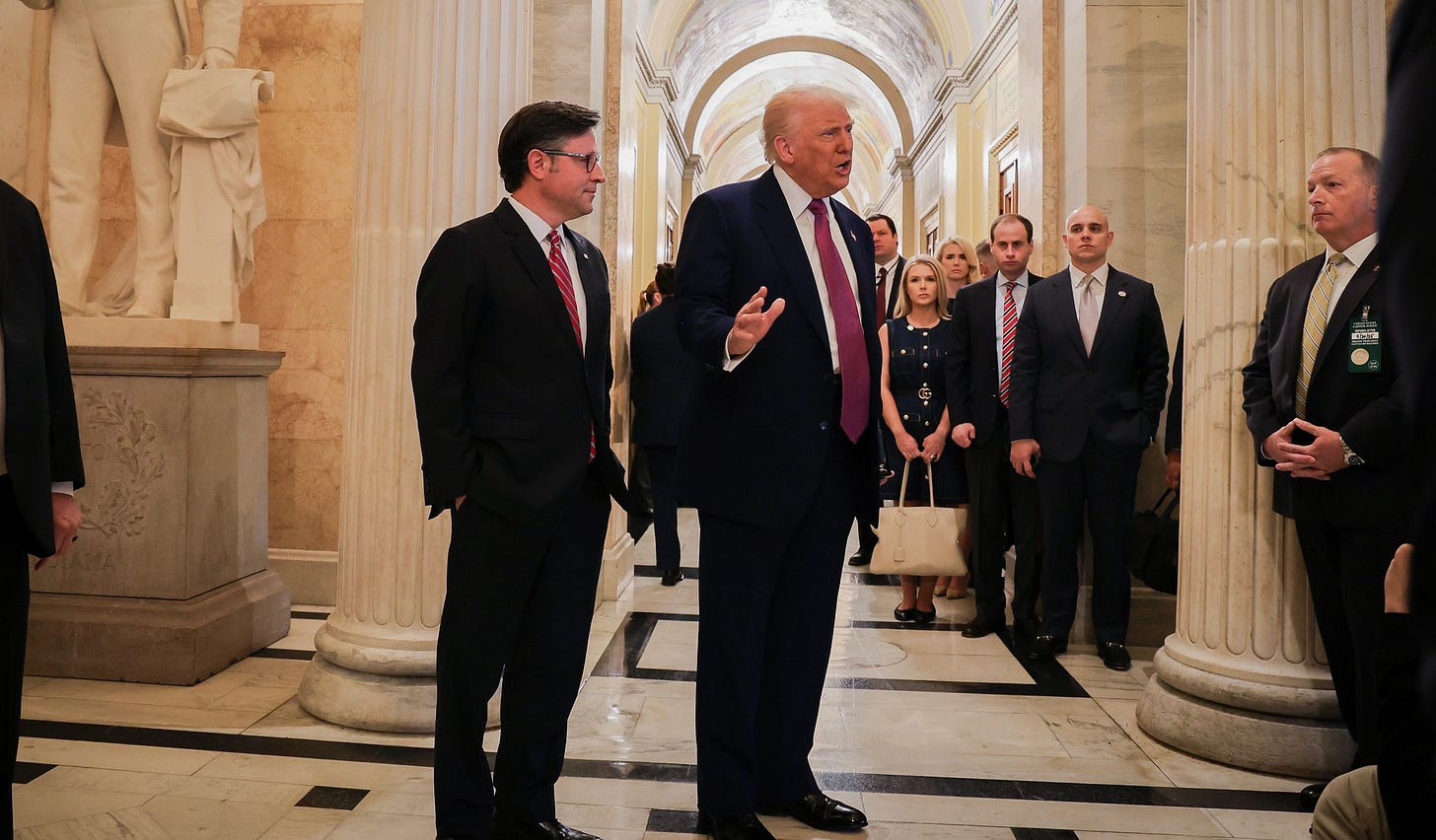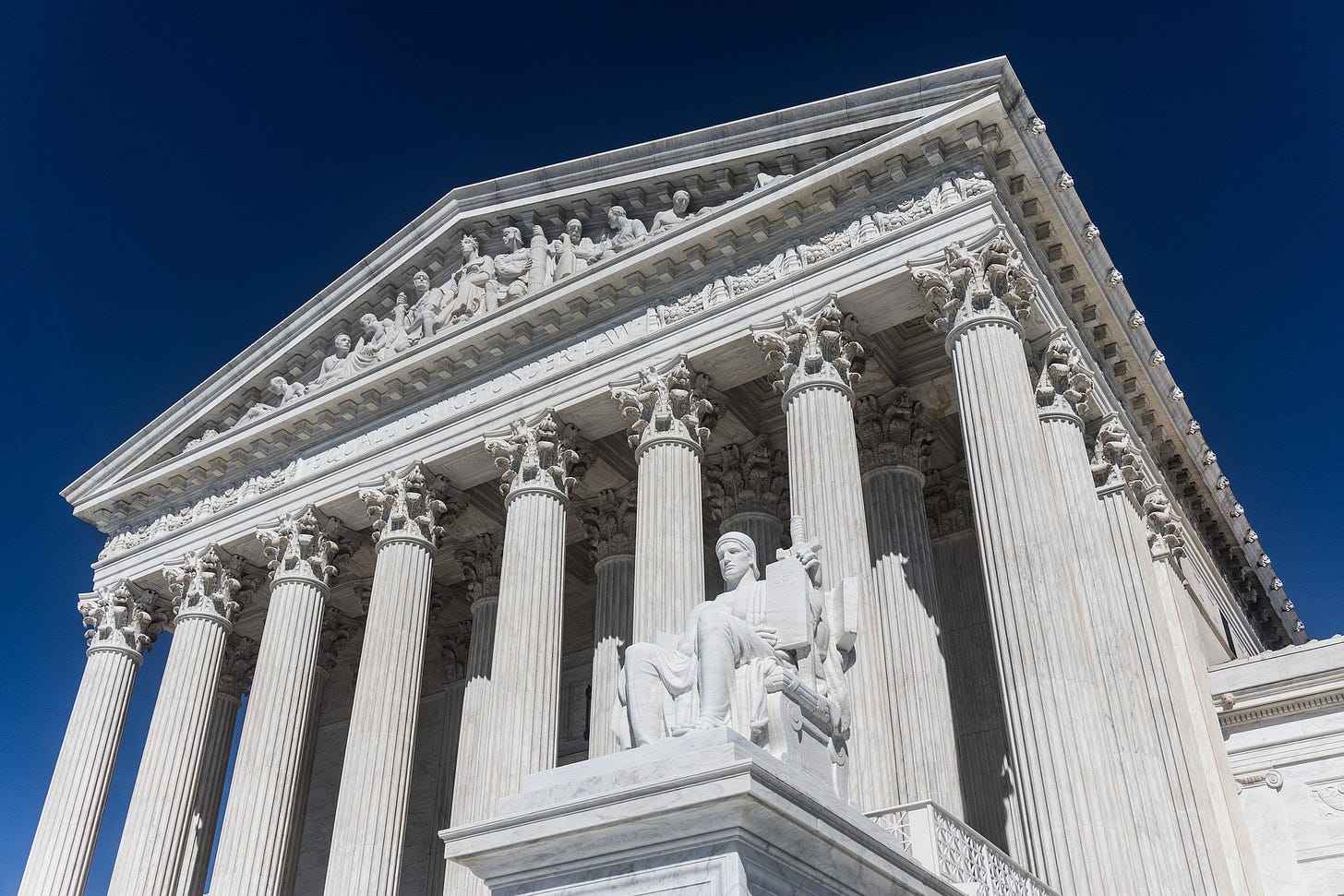A Supreme Warning for the Corporation for Public Broadcasting’s Board
A late-afternoon Supreme Court ruling may have profound implications for CBP. Plus, an update on the “One Big Beautiful Bill Act.”
Earlier this afternoon, a very busy Supreme Court handed the Trump Administration a temporary win. In an unsigned order, the justices temporarily reinstated the dismissals by President Donald Trump of Cathy Harris from the Merit Systems Protection Board and Gwynn Wilcox from the National Labor Relations Board while their court case made its way through the legal system. Both had several years left in their terms and both were appointed by President Joe Biden.
The case, which we’ll call Trump v. Wilcox, has taken several interesting turns: The two initially received a favorable ruling from two federal judges allowing them to remain in office, then had that order stayed by the D.C. Circuit Court of Appeals, and then had the order reinstated by a full appeals court. Today’s ruling officially stays the original ruling by the two federal judges, meaning that the White House can remove Wilcox and Harris from their positions while they wait for a decision on the full case.
Wilcox and Harris argue that they cannot be fired by the President for two main reasons: First, that the longstanding 1935 Supreme Court decision Humphrey’s Executor v. United States - which found that Presidents cannot fire members of independent, Congressionally-created regulatory committees that lack substantial executive power without cause - protects them from the President’s dismissals; and second, that the laws passed by Congress creating and governing the two bodies strictly prohibit their dismissal without cause.
The government’s argument, simply put, is that MSPB and NLRB actually exercise significant executive power, and are therefore not bound to Humphrey’s Executor.
This is an order with a lot of implications - not just because it allows the White House to move forward with Wilcox and Harris’s dismissals, but because the justices themselves have hinted that they’re inclined to agree with the government’s argument. For a much more thorough (and better) breakdown of today’s order and what it means, I urge you to read Amy Howe’s post on SCOTUSblog.
Why is this important for public media? The President has already tried to remove three members of the Corporation for Public Broadcasting’s board…and now CPB is asking courts to block the dismissals using essentially the same arguments as Wilcox and Harris. Humphrey’s Executor isn’t explicitly mentioned in their complaint filed with the D.C. Circuit Court, but CPB’s lawyers lay out every single statute and court ruling that has established CPB as a corporation independent from the government in painstaking detail.
There is some hope for CPB: Both MSPB and NLRB are technically federal agencies, while the architects of the Public Broadcasting Act of 1967 took painstaking steps to make CPB a public corporation. Additionally, the government’s lawyers are using “executive power” as a litmus test for federal entities that they don’t consider to be covered under Humphrey’s Executor - I doubt anyone actually believes that distributing a fraction of a percentage of the annual federal budget to community broadcasters comes close to significant executive power.
Still, today’s Supreme Court order contradicting Humphrey’s Executor could set off a flurry of emergency court applications by the White House to allow the dismissals of all other federal entity board members to stand pending a full resolution in court, including the three from CPB.
And they might be granted.
“One Big Beautiful Bill Act” public media watch

At 6:56 Eastern this morning, the House of Representatives passed their sweeping tax bill, called the “One Big Beautiful Bill Act,” with a narrow vote margin of just 215 to 214. This is a mammoth of a bill, containing over 1,000 pages of legislation and 345 different sections, spanning everything from taxes to clean vehicle credits.
Much has been written about the broad implications of the bill, but it curiously doesn’t contain much of any tax legislation regarding public media. The Communications Act of 1934 is invoked in Section 43101 authorizing a new spectrum auction, otherwise there is no mention of the Corporation for Public Broadcasting, or even the word “radio.”
The only other thing I could find that could possibly be construed as public media-adjacent is a quirky provision in Section 111108 that adds sound recording equipment to the (short) list of multimedia equipment that can be written off.
It’s hard to tell if this is a good or bad omen for public media. I suppose we’ll have to wait for the “One Big Beautiful Bill Act” to make its way through discretionary spending hearings to find out.





